From Woofs to Words: Decoding Your Dog’s Body Language
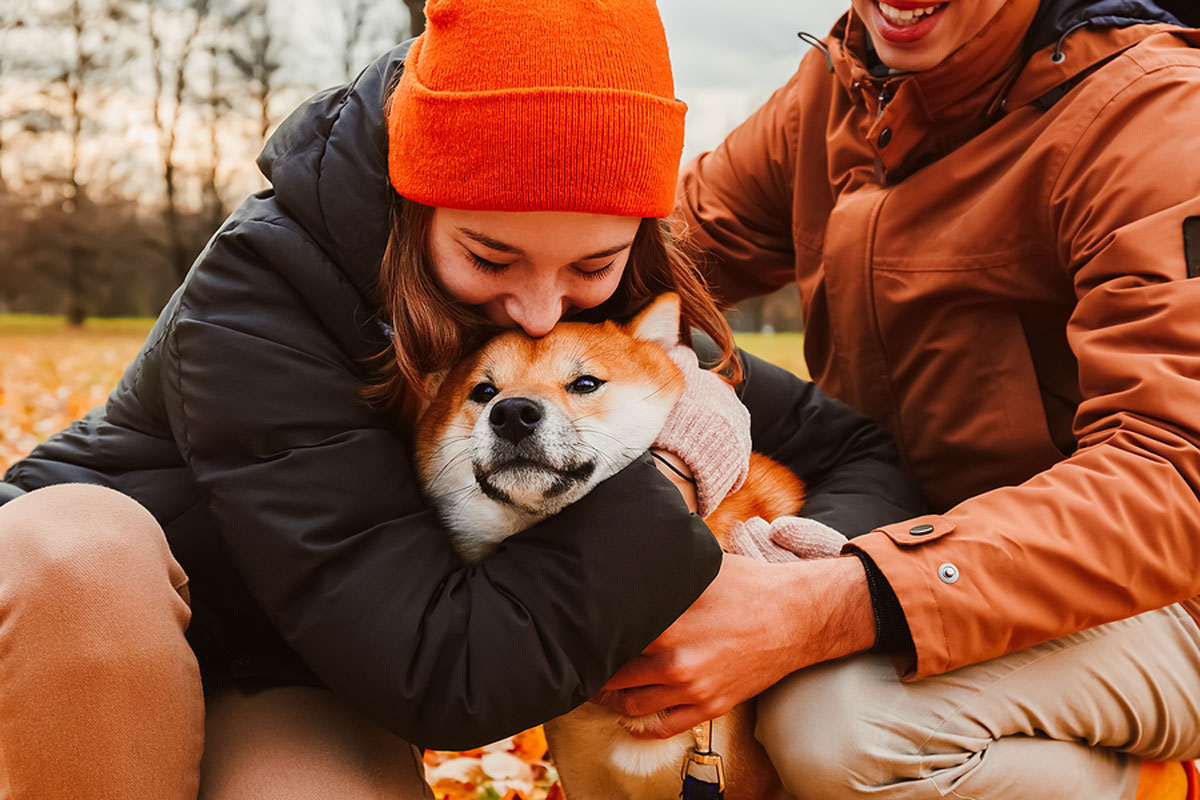
Dogs, our beloved companions, have a unique way of communicating with us. While they might not use words like we do, our canine companions are master communicators in their own right.
From the manner in which their tails sway to the placement of their ears, every little nuance matters. Let’s delve deeper into the realm of tail wagging, perky ears, and playful paws as we unravel the meaning behind your dog’s physical communication!
1. Wagging
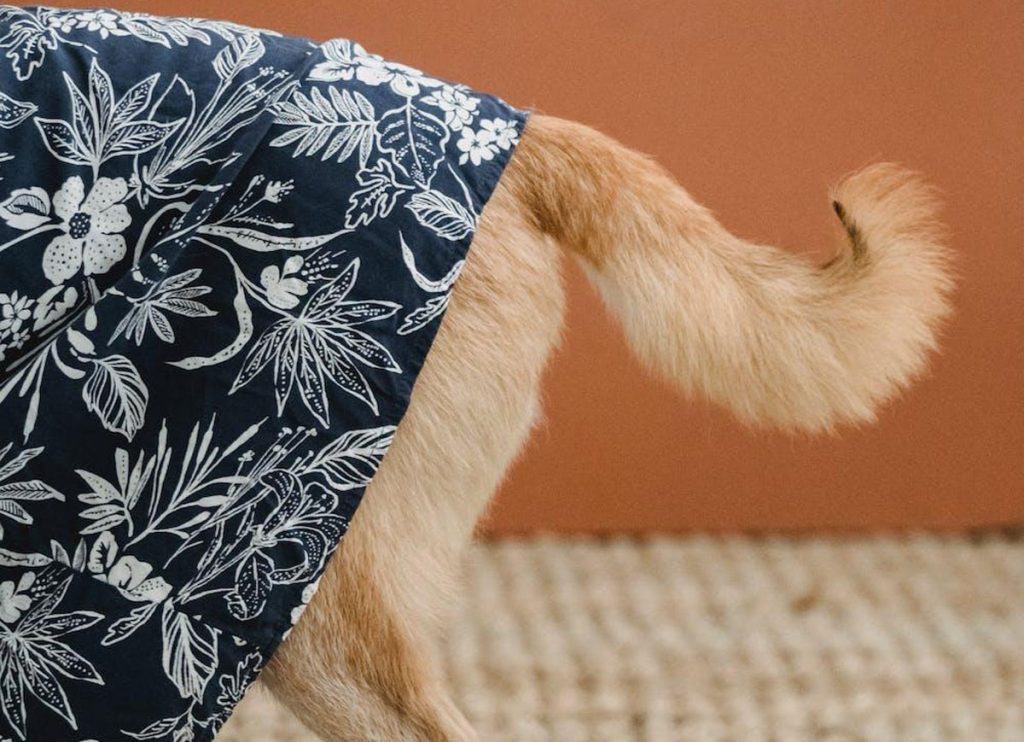
Source: Pexels
One of the most iconic features of a dog’s body language is undoubtedly its tail. A wagging tail might seem straightforward, but there’s a world of emotions hidden in the angle, speed, and direction of that wag.
If your pup’s tail is held high and wagging energetically, it’s likely to express happiness and excitement. A slow wag, however, can signal uncertainty or caution. Pay attention to the tail’s position as well—a tucked tail often indicates fear or submission, while a puffed-up tail can be a sign of aggression.
2. Ears Up, Ears Down
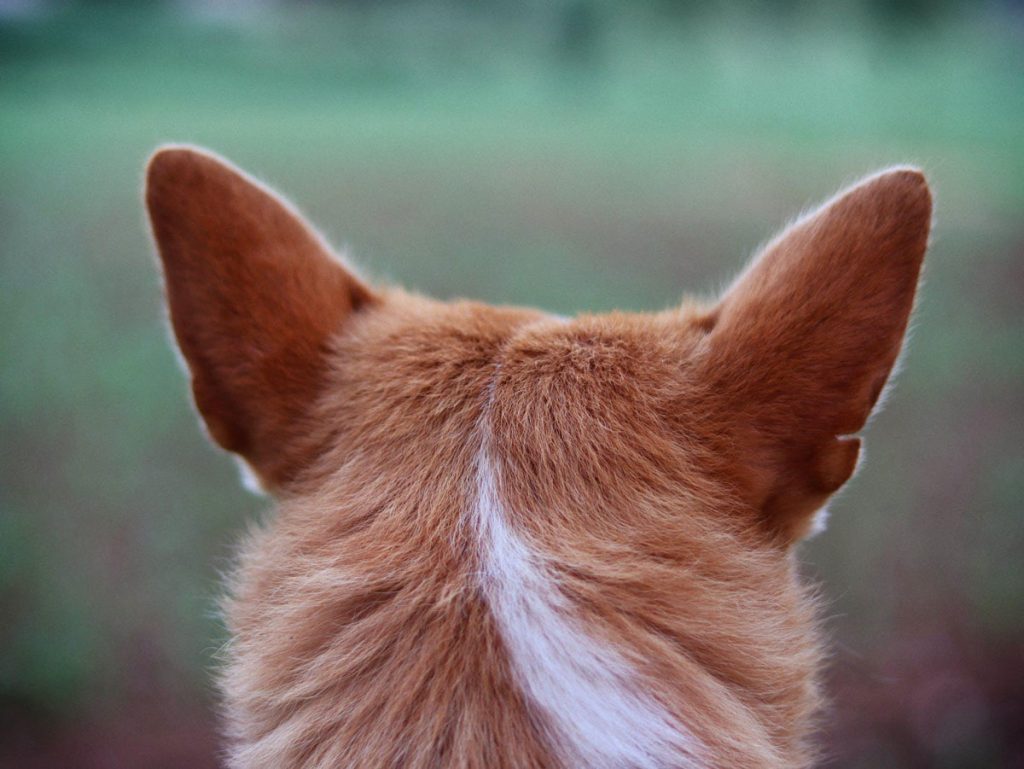
Source: Pexels
A dog’s ears are like antennas, broadcasting their emotions for all to see. When your furry friend’s ears are erect and facing forward, they’re in a state of alertness or curiosity.
On the other paw, if the ears are flattened against the head, it’s a sign that your pup might be anxious or scared. A middle ground, where the ears are perked up but not entirely stiff, could mean your dog is friendly and interested in interacting.
Keep in mind, though, that some breeds naturally have ears that rest differently, so always consider what’s typical for your furry friend.
3. Pupils, Stares, and Blinking

Source: Pexels
The saying that eyes are the windows to the soul holds true for dogs too. When your dog looks at you with relaxed eyes and blinks slowly, it’s akin to a loving gaze. This is often referred to as “doggy kisses” and is a sign of trust and affection.
However, prolonged direct staring without blinking can be interpreted as a challenge or a threat in the canine world. So, it’s best to avoid prolonged staring contests with your furry companion.
4. Rolling Over
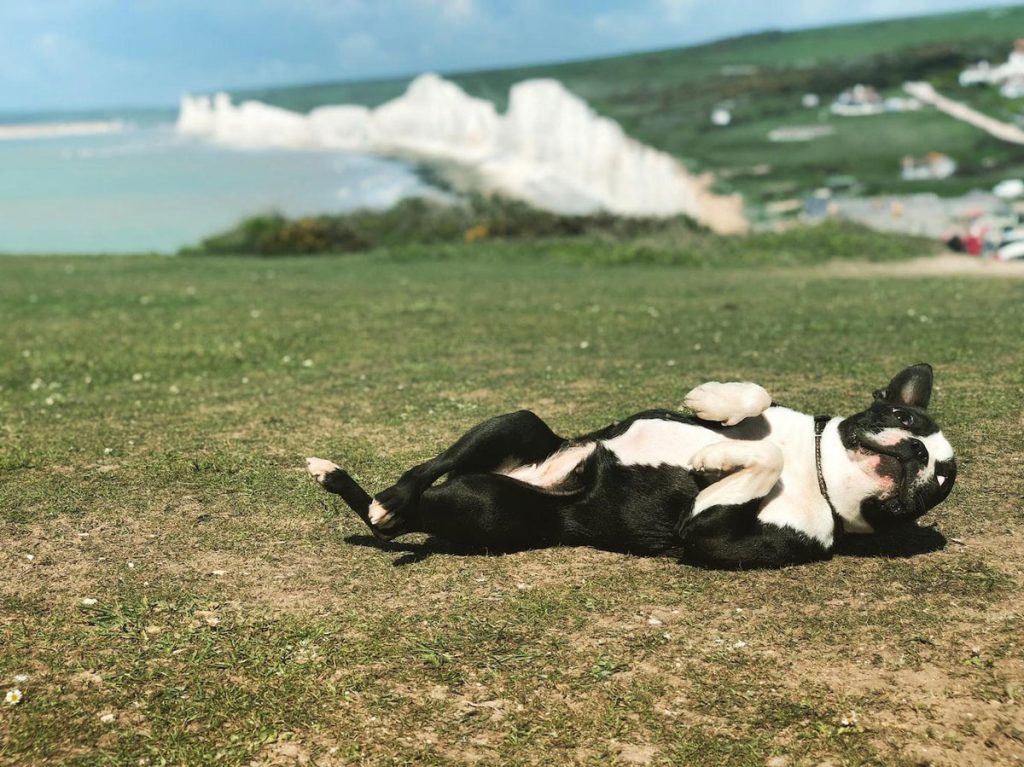
Source: Unsplash
Few things are as heart-melting as a dog rolling over, exposing their belly. This vulnerable position speaks volumes about your dog’s trust in you. They’re saying, “I’m putting myself in your hands.”
But remember, not all belly displays are an invitation for tummy rubs. Sometimes, it’s a sign of submission, so approach it with care.
5. Sniffing and Pawing
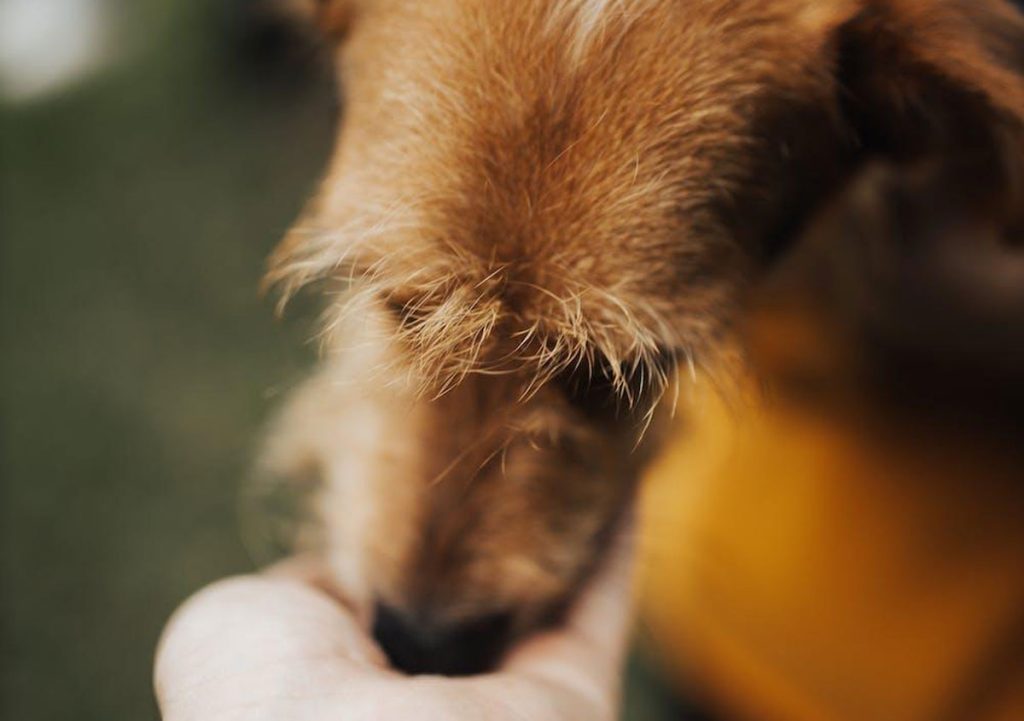
Source: Pexels
A dog’s sense of smell is incredible, and sniffing is their way of gathering information about the world. Sniffing the ground or another dog’s back end is a normal and polite way of saying, “Hey, tell me about yourself!”
Pawing can have multiple meanings too. It could be a gentle request for attention or play or even a way to claim their territory by leaving their scent on you.
6. Barks, Bounces, and Bows
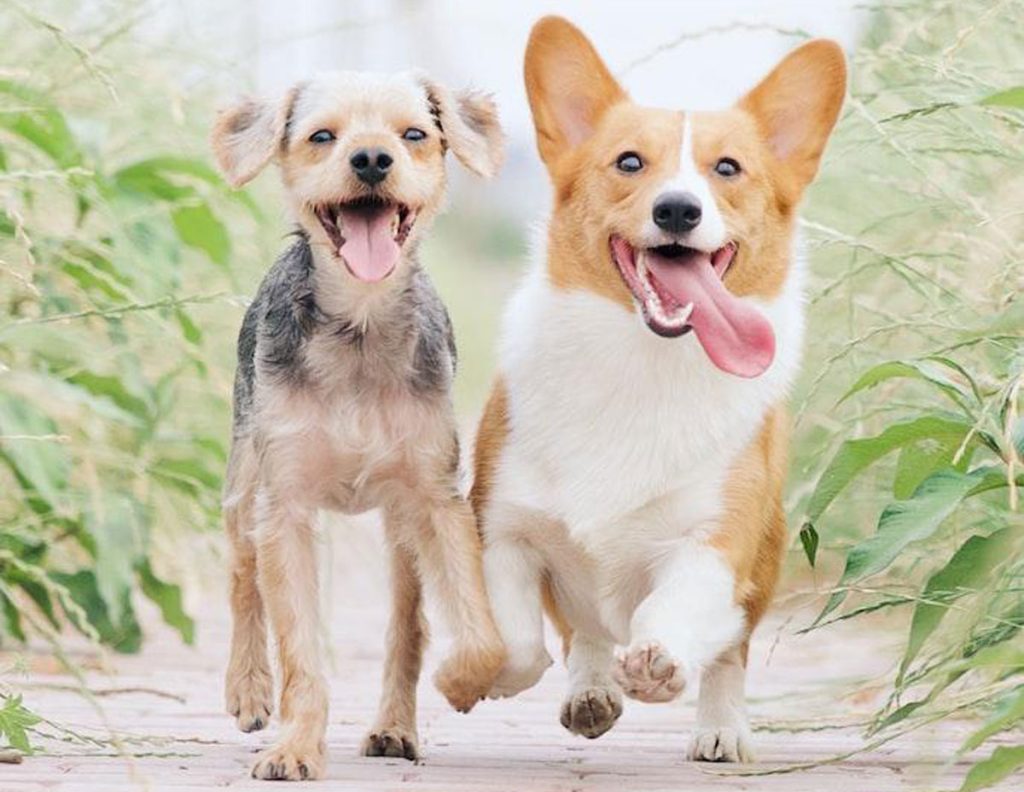
Source: Unsplash
When your dog is in the mood for some activities or playtime, their body language becomes an exuberant invitation. A play bow, where the front of the body is lowered with the rear end in the air, is a classic signal that your pup wants to frolic around. Barking, combined with enthusiastic bounces and a wagging tail, further reinforce the message that it’s time for a game of fetch or chase. Responding to these cues with equal enthusiasm can lead to delightful bonding experiences.
Signs of Stress and Discomfort
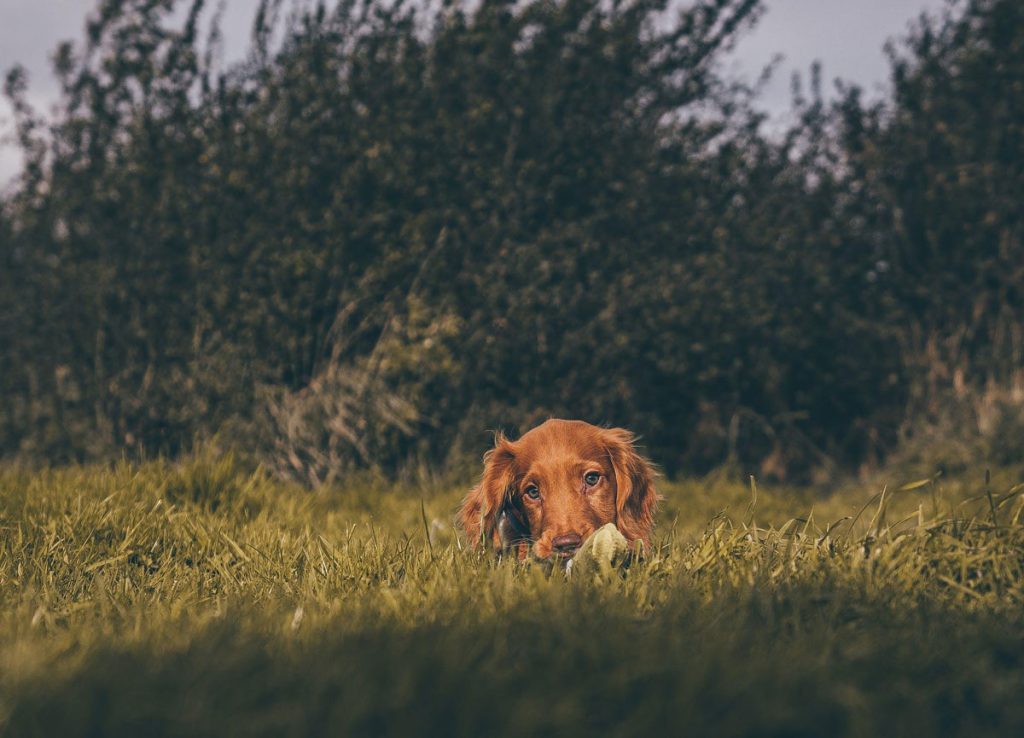
Source: Pexels
Just as dogs express joy and excitement through body language, they also communicate distress and unease. Heavy panting, excessive shedding, or sudden changes in body posture can indicate stress. Yawning when not tired, lip licking, and avoiding eye contact are subtle ways your dog might signal discomfort. Paying attention to these cues is crucial for ensuring your dog’s well-being and promptly addressing any sources of stress.
Reading Individual Personalities
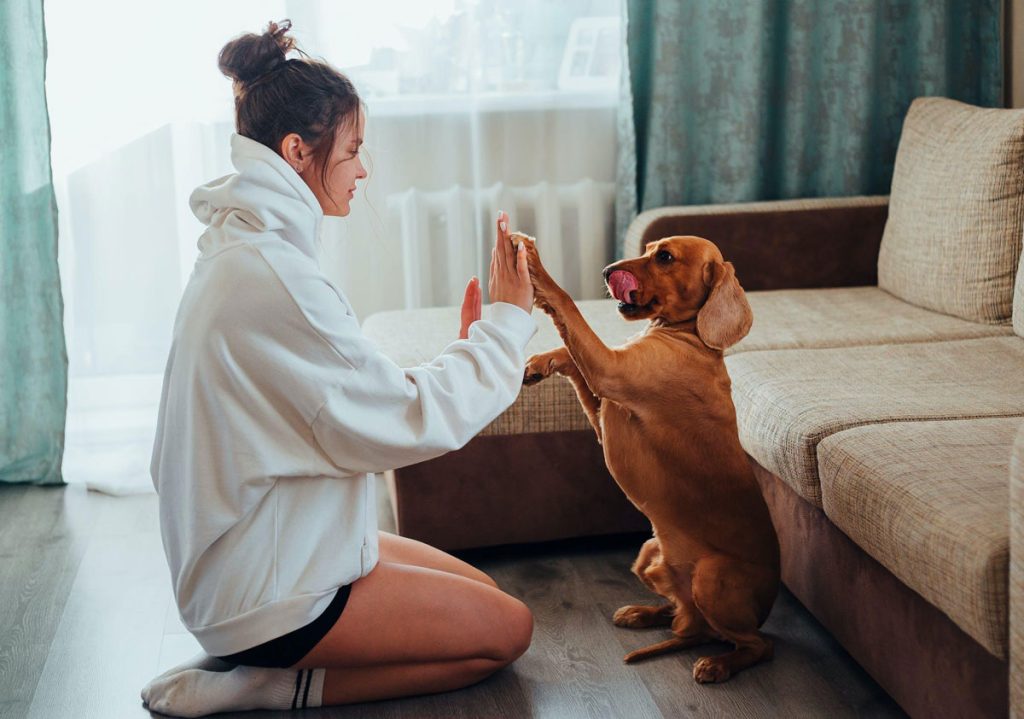
Source: Pexels
Just like people, every pup has their own unique personality—and that includes their communication style. Some dogs might be more reserved and express themselves subtly, while others are all about enthusiastic gestures. Spending quality time with your dog and observing their behaviour across various situations will help you develop a better grasp of their individual language.
Have a go at Learning Your Dog’s Body Language!
Decoding your dog’s body language is like learning a new language—it takes time, patience, and a keen eye. Remember, understanding their signals isn’t just about decoding their woofs; it’s about strengthening the unbreakable bond you share. So next time your dog gives you a slobbery grin or nudges you with a paw, you’ll know you’re having a full-on, two-way conversation—no words needed.
Eager to Dive Deeper into the World of Pet Communication?
At Clubpets, we are a community of passionate pet lovers, just like you, committed to providing our beloved pets with the best possible quality of life. With insightful articles, engaging content, and heartwarming stories, we help you deepen your understanding of your pet’s unique language and strengthen the unbreakable bond you share.
Don’t miss the opportunity to become a canine whisperer by joining us at the Clubpets’ Pet Expo 2024! From immersive workshops that offer hands-on learning to exhilarating pet competitions that celebrate the unique spirit of your furry friend, this event is your gateway to forging a deeper connection within a vibrant, like-minded community. Take the plunge and chart a new course of connection and understanding with us today!








